In the aftermath of a gripping UEFA Champions League encounter between Lazio and FC Bayern that culminated in a 1-0 scoreline, the footballing world is abuzz with discussions surrounding the potential ramifications for FC Bayern’s head coach, Thomas Tuchel.
Following the Bundesliga summit’s disappointing 0-3 defeat against Bayer Leverkusen last Saturday, Thomas Tuchel’s team experienced another significant setback with a 0-1 loss in the first leg of the Round of 16 against underdog Lazio Rome. This comes despite Thomas Tuchel opting against personnel experiments this time. Instead of employing a surprising three or five-man defence, Bayern adhered to the trusted 4-2-3-1 system.
This tactical analysis seeks to unravel the intricacies of the match, delving into the tactics, player performances, and overall team dynamics that may have contributed to FC Bayern’s unexpected setback. As the whispers of Tuchel’s job security gain momentum, we meticulously examine the key moments and tactical nuances that unfolded during this decisive clash, exploring whether the outcome might cast a shadow over Tuchel’s tenure at the helm of one of football’s powerhouses.
Line-ups
Lazio faced uncertainties in their lineup as they approached the match. Matias Vecino, Patric, and Mattia Zaccagni were all contending to regain fitness, with coach Maurizio Sarri suggesting that a decision on Vecino’s participation would be made on the morning of the game.
The Lazio lineup included Provedel in goal, Marusic, Gila, Romagnoli, and Hysaj in defence, Cataldi, Guendouzi, and Alberto in midfield, and Isaksen, Immobile, and Anderson leading the attack.
The German giants arrived in Rome for their last-16 first leg, still reeling from a dismal 3-0 defeat to title rivals Bayer Leverkusen. Bayern faced the challenge without key players, including the injured trio Serge Gnabry, Alphonso Davies, and Kingsley Coman. January signings Eric Dier and Sacha Boey were thrust into the spotlight with mixed results. Meanwhile, Bryan Zaragoza, a newcomer hoping to overcome illness for his debut in Italy, found himself on the bench alongside Dier and Boey.
In a strategic move, Joshua Kimmich, who had come off the bench in Leverkusen, slotted into the midfield for this game. Raphael Guerreiro replaced Boey at left-back and experienced option Thomas Muller was poised to enter the attack. Tuchel’s pragmatic decisions, opting for Muller and Kimmich, highlighted the coach’s emphasis on experience and leadership qualities, aiming to instil confidence and stability in the team during a challenging phase.
The Bayern Munich lineup featured Neuer in goal, Mazraoui, Upamecano, Minjae, and Guerreiro in defence, Kimmich and Goretzka in midfield, and Müller, Musiala, Sané and Kane leading the attack.
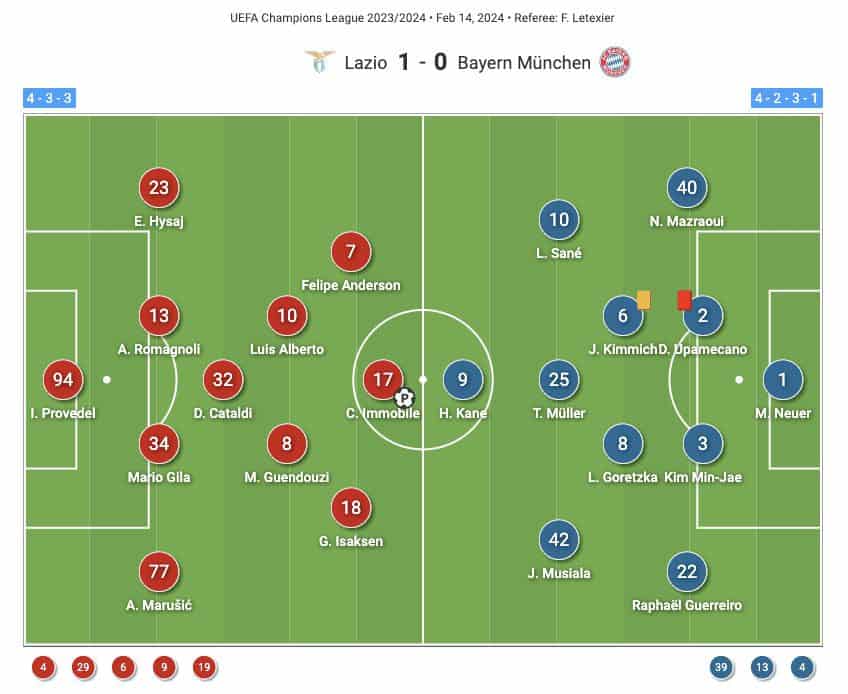
Build-up
Bayern Munich’s build-up play was structured around the nominal 4-2-3-1 formation. Notably, Lazio strategically borrowed from Bayer Leverkusen’s recent tactics by overloading the centre of the pitch. Despite allowing Bayern to progress and circulate the ball around the defensive lines, Lazio effectively closed off passing lanes to the centre, specifically nullifying the involvement of Jamal Musiala, who once again didn’t actively drop deep during this phase.
The approach mirrored Bayer Leverkusen’s defensive strategy against FC Bayern last weekend, masterminded by coach Xabi Alonso. Leverkusen deployed a narrow attacking block to congest the middle of the pitch, aiming to defend more effectively against the dynamic duo of Jamal Musiala and Leroy Sané, who often look to exploit the half-spaces. Musiala, in particular, attempted to drop deep into the midfield to become an additional passing option. However, Granit Xhaka, along with Robert Andrich marking Sané, maintained the positional discipline to disrupt Bayern’s defence from playing the ball to these dangerous players, who thrive when given the space to turn and run.
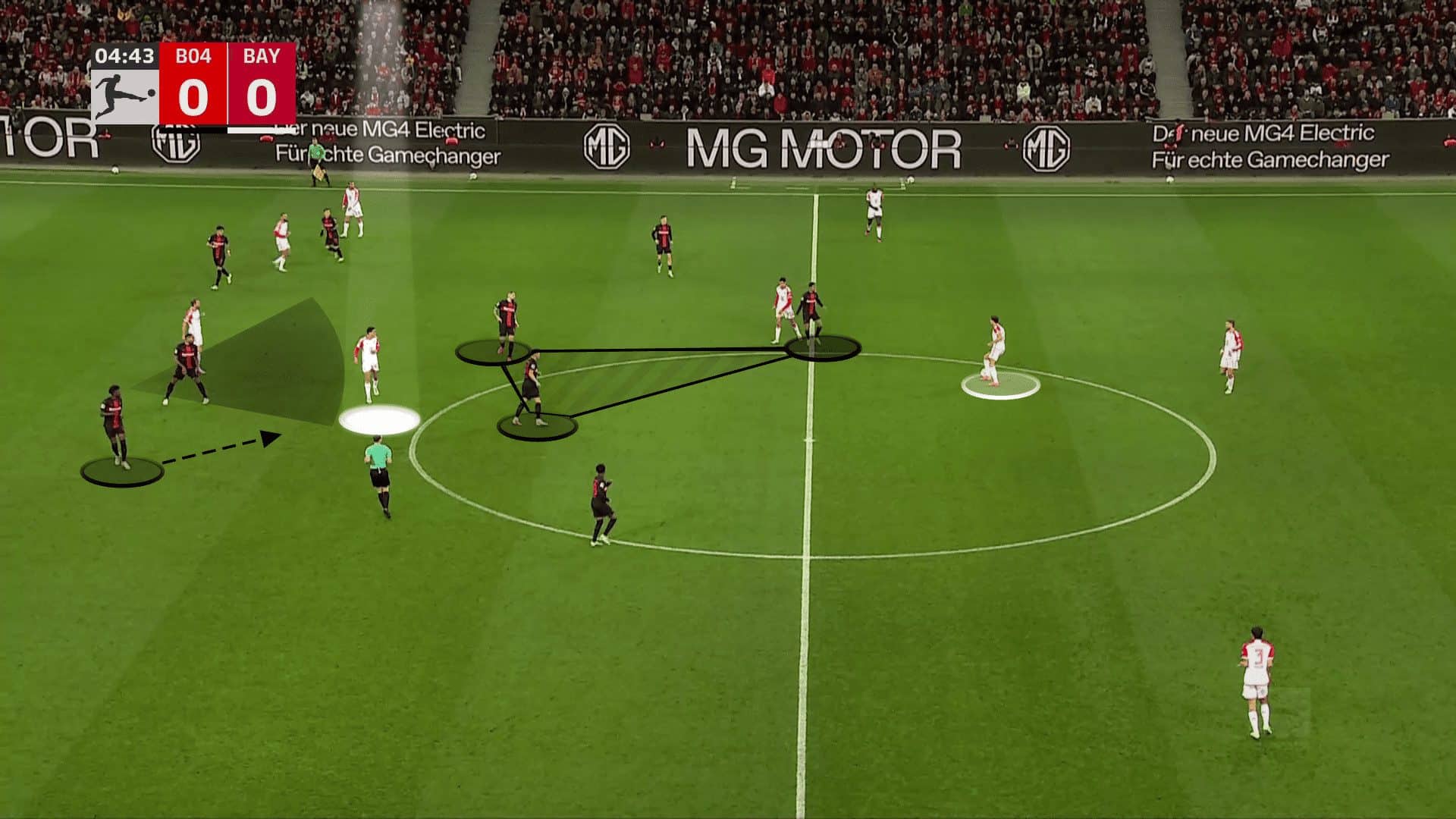
This tactical adaptation by Lazio limited Bayern’s creative opportunities and disrupted their build-up play, showcasing the effectiveness of Leverkusen’s defensive template.
As Bayern attempted to adapt their build-up play by widening their formation and transitioning into a 2-4-4 shape to create more space, Lazio responded with a composed defensive strategy. They positioned themselves in a midblock using a 4-4-2 formation, maintaining their central overload to control the core areas of the pitch. Lazio willingly allowed Bayern to have possession and build up slowly in this tactical setup.
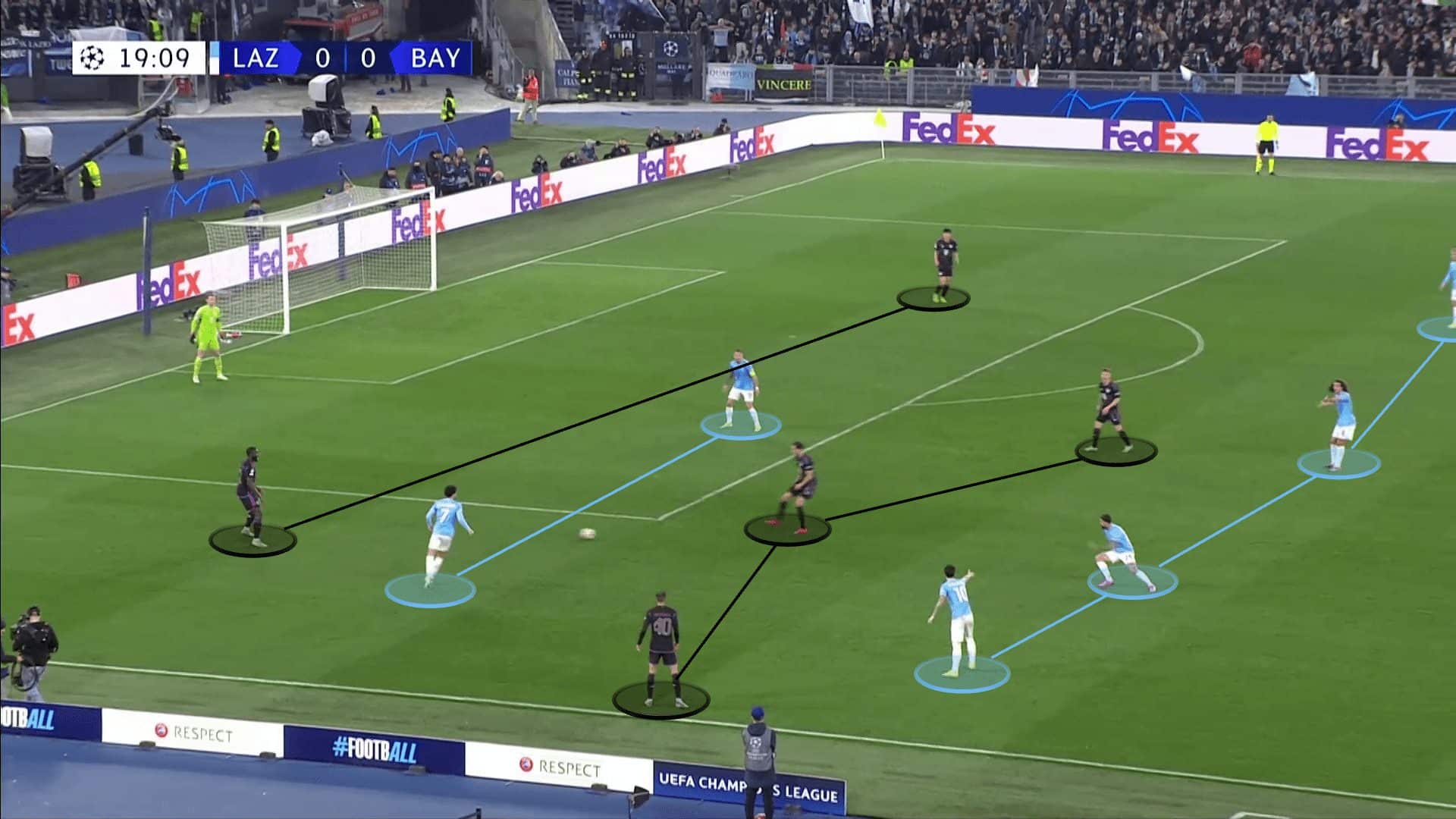
The defensive ease for Lazio stemmed from Bayern’s predictable attacking patterns. Despite Bayern’s efforts to create width and explore alternative spaces, the majority of their players targeted the halfspaces, which Lazio effectively covered. This defensive awareness and positional discipline made it a relatively straightforward task for Lazio to thwart Bayern’s attempts, limiting the attacking movements that could have posed a threat. The defensive structure and readiness of Lazio nullified Bayern’s attempts to break through, resulting in a match where Lazio could comfortably defend against Bayern’s build-up play.
Lazio’s Compactness
Playing against Lazio poses a formidable challenge for any team. Under the guidance of coach Maurizio Sarri, Lazio showcased defensive prowess by keeping clean sheets in 9 of their last 11 home games. The 1:0 scoreline appeared to be a favourite outcome for them, with 60% of their home victories that season concluding in such a manner. This defensive solidity allowed Lazio to secure points efficiently, emphasising their strategic approach of ensuring minimal goals conceded.
Lazio’s defensive resilience was not solely about parking the bus but stemmed from an active defensive style. Despite boasting the best running statistics in Serie A, Lazio not only kept opponents away from their defensive third but also effectively restricted passes behind their defensive line.
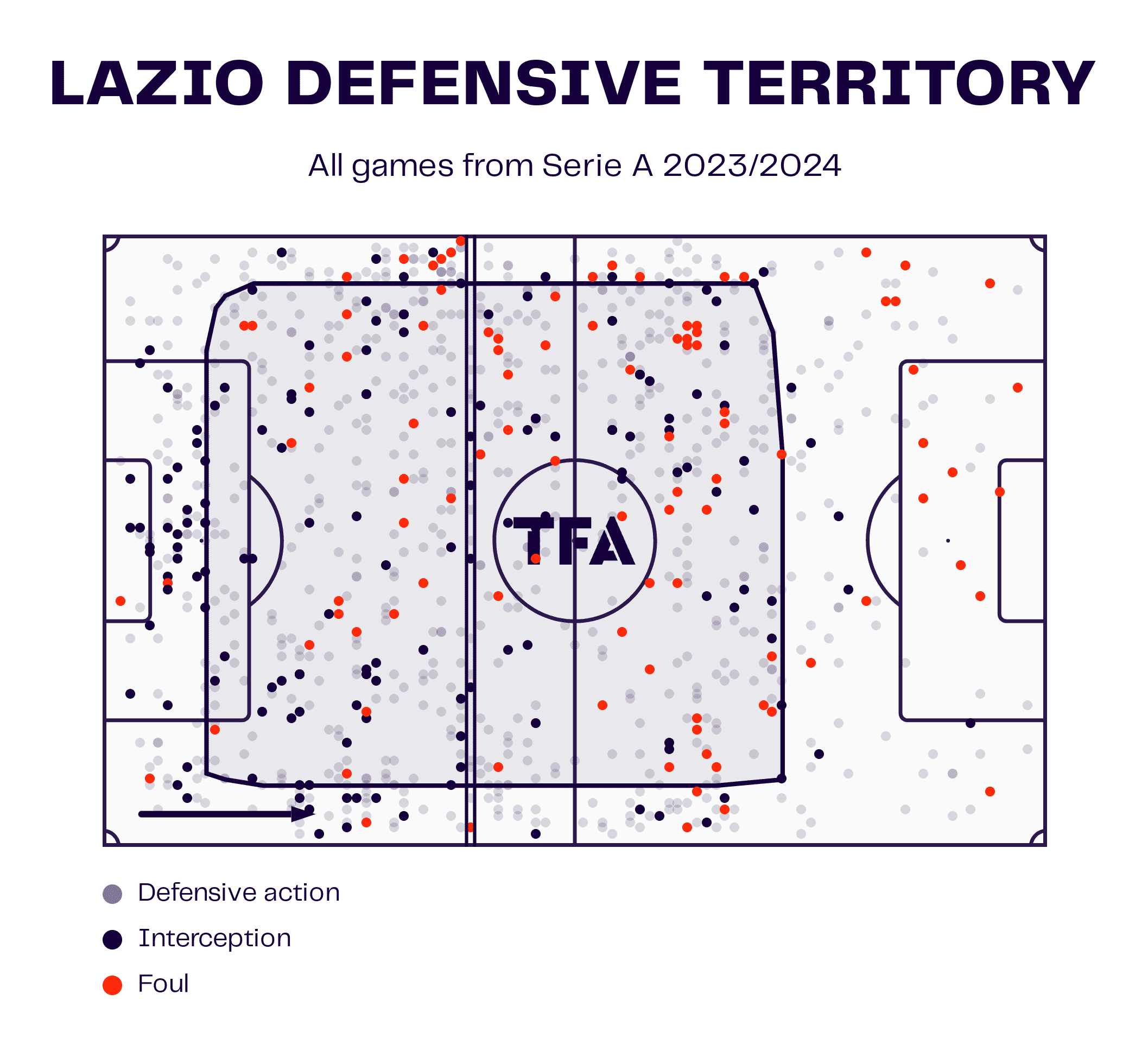
For FC Bayern, entering the Champions League Round of 16 first-leg clash against the 8th-placed team in Italy presented a daunting task. Lazio’s compact defensive structure and ability to limit dangerous passes and shots proved to be a stumbling block for even the likes of Italian top teams.
Having struggled to create significant scoring opportunities in recent matches, Bayern had to navigate through a well-organized Lazio defence that excelled in denying their opponents space and options. Despite Bayern’s clear favouritism, breaking down Lazio’s defensive resilience on their home turf was expected to remain a formidable challenge.
Attacking Phase
In their attacking endeavours, Bayern Munich adhered to their well-known 2-3-5 formation, a configuration recognised for its inherently offensive nature.
Raphael Guerreiro refrained from overlapping on the left side, and Jamal Musiala, not naturally a winger, consistently moved into his preferred left halfspace. This predictability in Bayern’s attacking movements played into the hands of the Lazio defence, providing fewer surprises and, consequently, limiting the chances conceded.
Thomas Müller, typically stationed in the central attacking midfield role, shifted towards an almost right-wing position during the attacking phase. This adjustment resulted in a lack of overlapping on the right flank, as Müller, Leroy Sané, and Noussair Mazraoui formed a triangular setup. However, this configuration proved less effective, as the trio tended to tuck in and pass towards the overloaded central area, lacking the element of surprise.
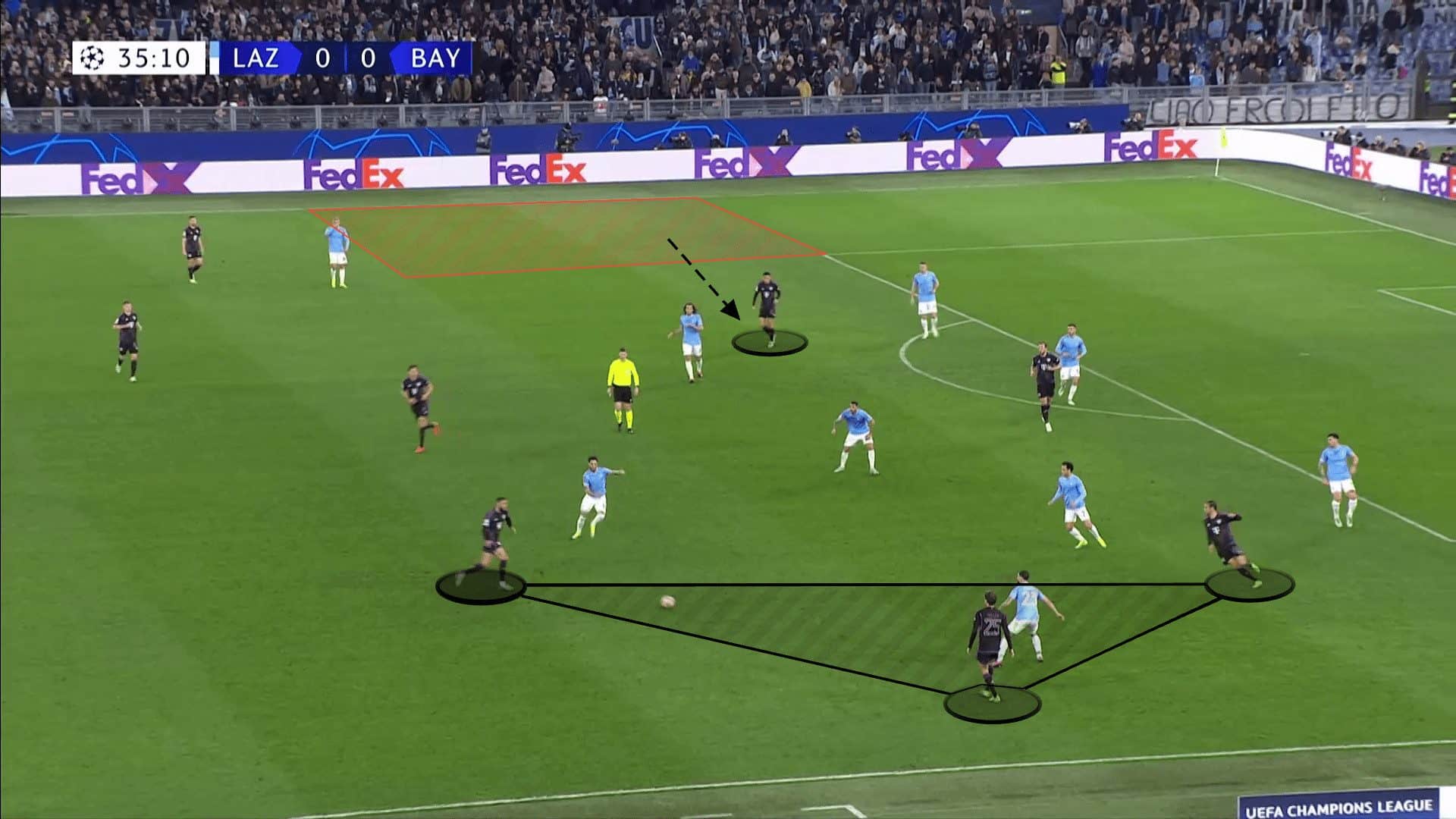
Bayern also experimented with a 4-3-3 or 4-1-4-1 formation, involving Musiala, Sané, and Müller interchanging in the halfspaces.
Defensive Phase
In the match’s early stages, Bayern demonstrated an active pressing strategy against Lazio. Bayern managed to put Lazio under pressure by overloading their building side of the pitch, utilising width, and maintaining compactness in their pressing efforts. The inability to press extensively throughout the whole game became a limitation for Bayern, affecting their counter-pressing capabilities.
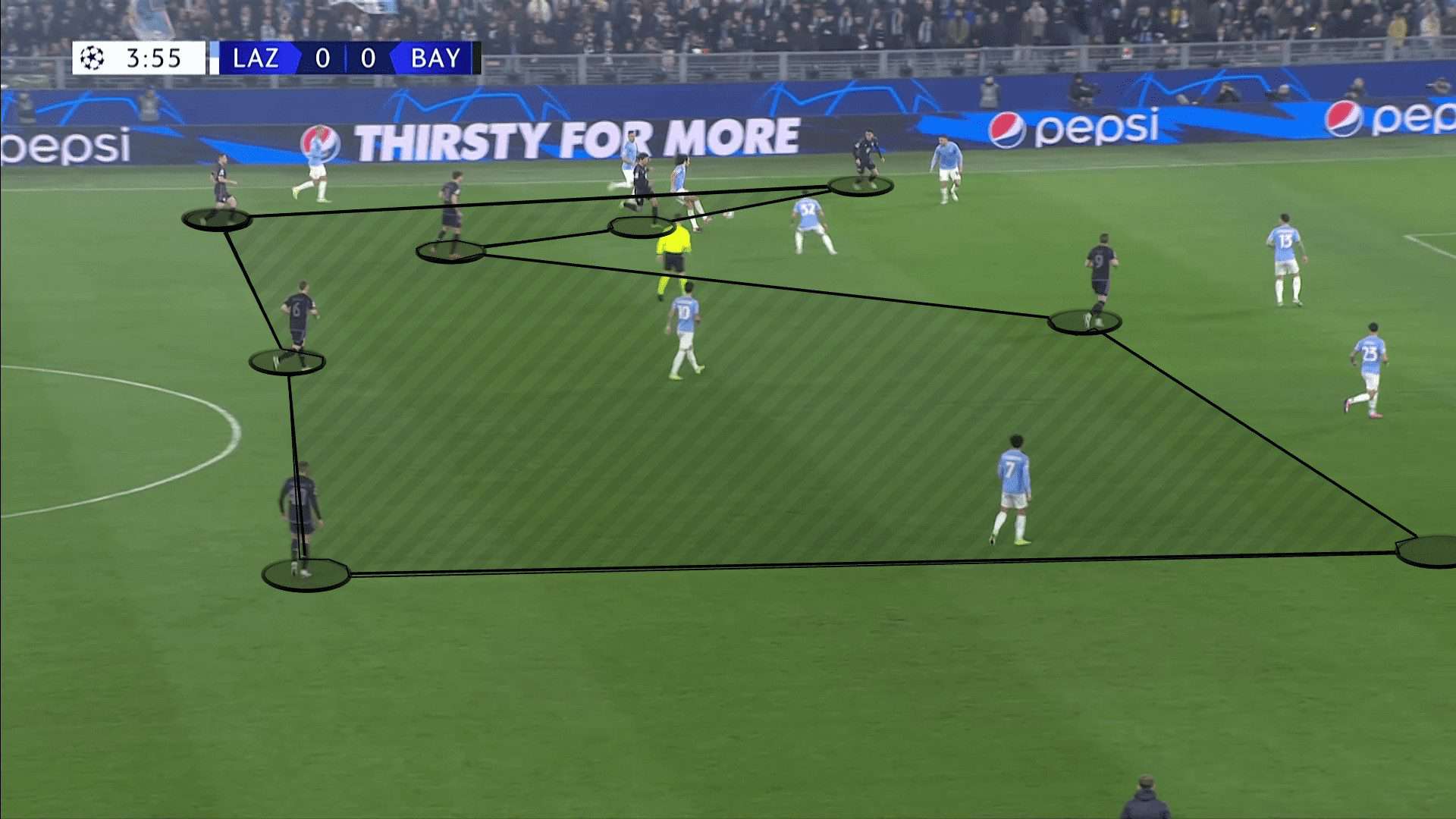
In the later stages, Bayern adopted a 4-4-2 formation, showcasing their prowess in this aspect of the game. The team has been proficient in conceding few chances to opponents, and Lazio struggles were reflected in the low xG. However, the effectiveness of solid defending can be overshadowed by a single critical moment, as seen in the game when Bayern conceded a penalty and a subsequent red card. Despite generally successful defensive performances, such lapses in concentration can prove costly.
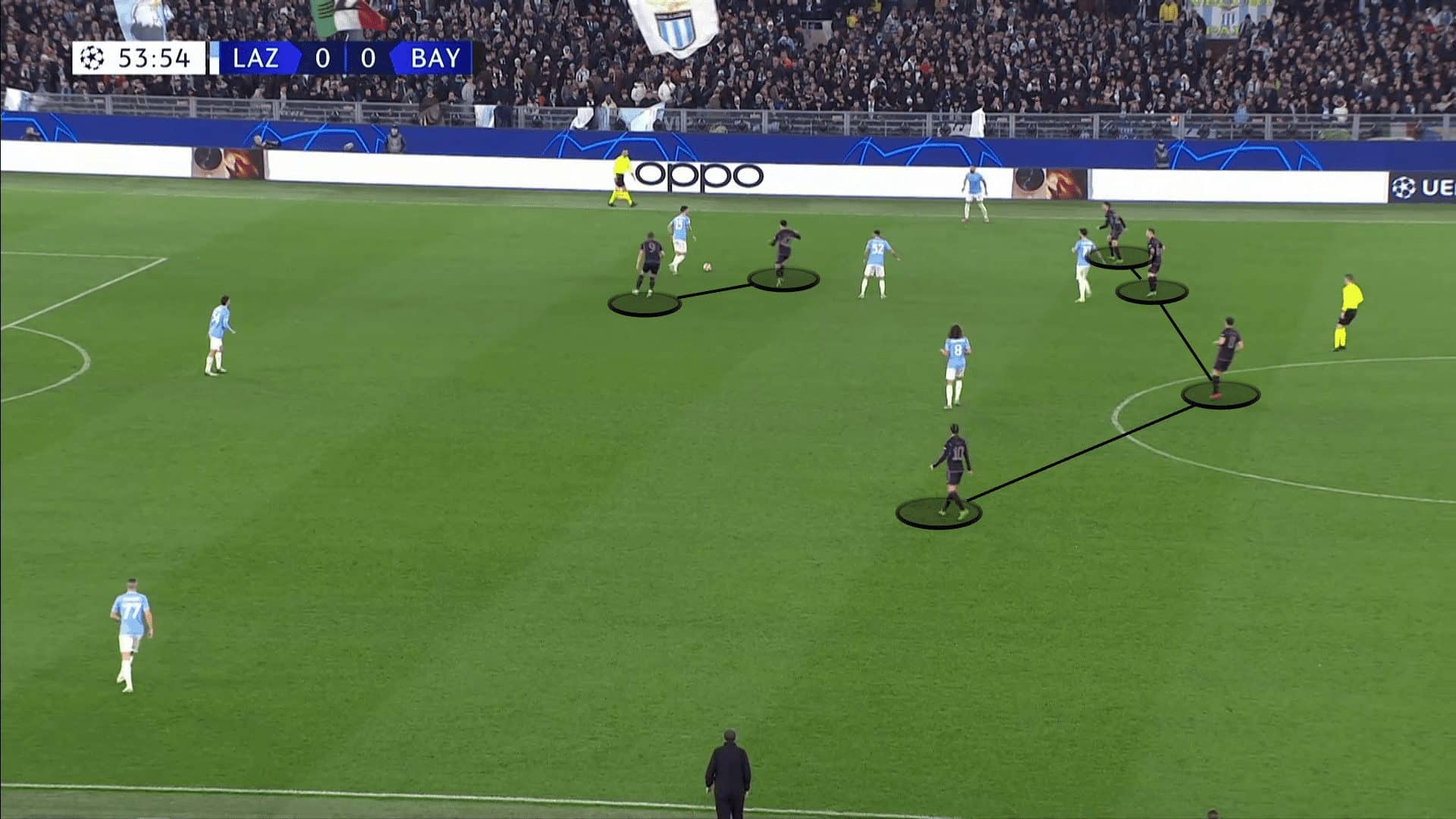
Lazio’s clinical efficiency in front of the goal has been surprising, considering their statistical underperformance in goals in Serie A, which actually stands at 28 compared to their 34.89 xGoals. Despite the numerical disparity, Lazio has capitalised on their low number of goal-scoring opportunities, showcasing a level of clinical finishing that surpassed statistical expectations. A significant factor contributing to this success is the presence of a prolific goalscorer like Immobile in their ranks. Immobile’s ability to convert chances and maximise goal-scoring situations has proven instrumental for Lazio.
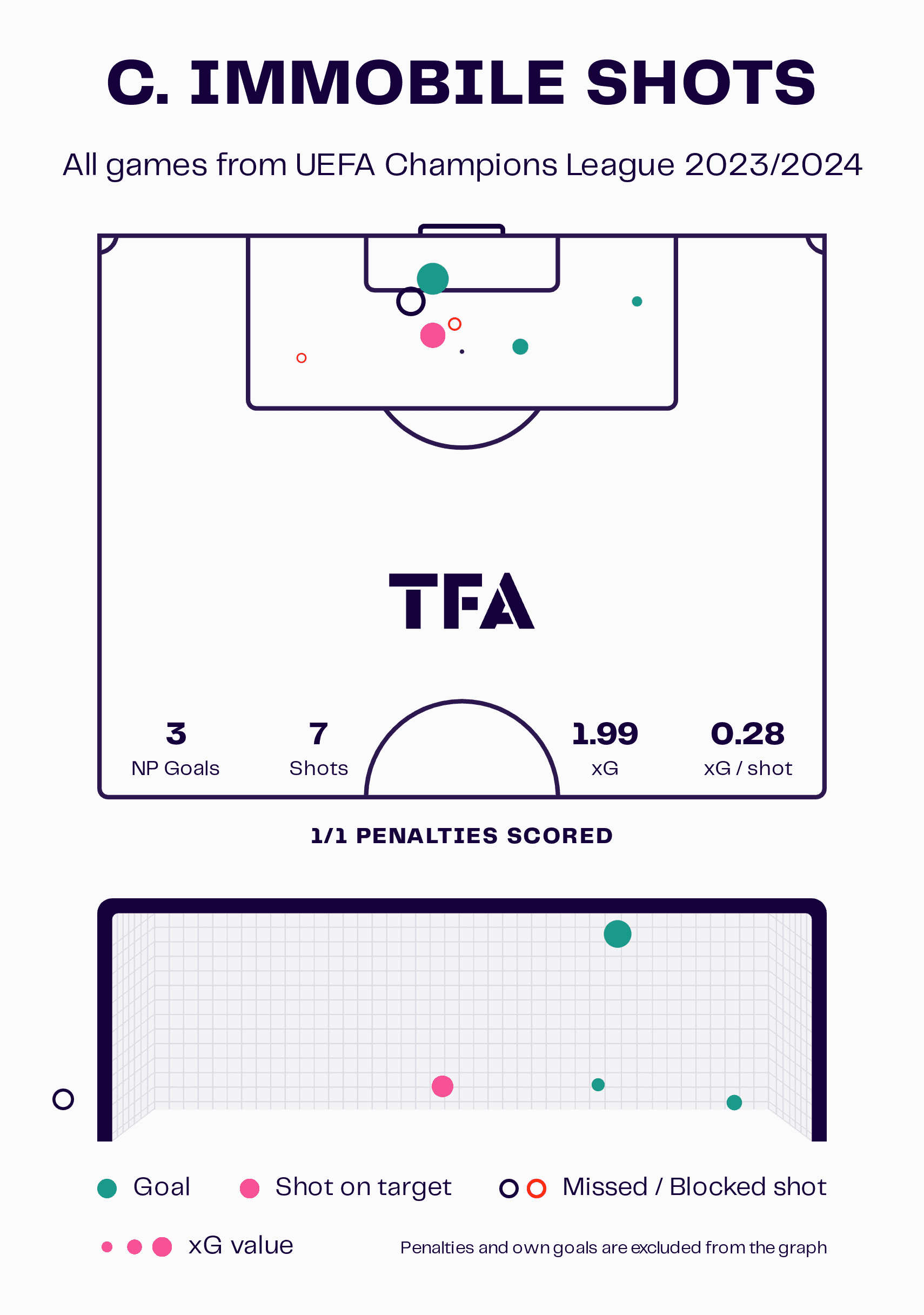
Tuchel the Problem?
Tuchel adopted a more straightforward tactical approach, minimising switches on the field, theoretically easing the players’ responsibilities. However, the gap between theory and practice is evident.
The lack of chance creation contrasts with Lazio’s ability to capitalise on simple opportunities, such as a foul, red card, or penalty, securing a home win. Bayern’s challenges extend beyond tactics, involving individual performances and execution. The team faces a collective issue encompassing both coaching and player dynamics. While Bayern possesses the quality to address these concerns, excuses should be dismissed, especially with the upcoming home match against Lazio.
A long-term perspective should guide decisions if a team revamp is considered, with significant moves reserved for the summer. The recent struggles extend beyond Tuchel, with players contributing to inconsistent performances. A summer “reset” should encompass coaching and player personnel changes to establish a cohesive team with a defined tactical identity. The focus should be on rebuilding and looking ahead, avoiding reliance on underperforming elements within the squad.
Conclusion
This analysis of the match between Lazio and FC Bayern revealed significant challenges for Tuchel’s side. The simplified approach did not translate into effective execution on the field, leading to a lack of chance creation. Lazio, in contrast, capitalised on simple opportunities to secure a win.
Considering the team’s collective issues, the question of Tuchel’s position as the head coach arises. While Tuchel bears partial responsibility, the analysis suggests a broader problem within the squad. A long-term approach is crucial, with the summer providing an opportunity for significant changes.
The emphasis should be on rebuilding the team’s identity, ensuring a cohesive unit with a clear tactical vision. Bayern need to evaluate the entire structure, both coaching and player personnel, to lay the foundation for sustained success.





Comments